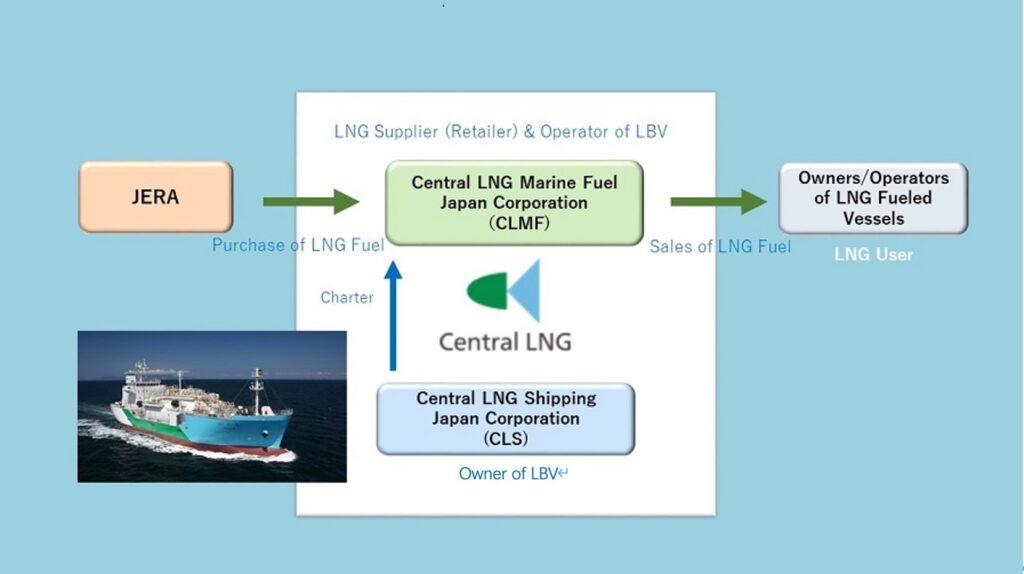

2024.11.18
The 100th Anniversary of Ship-to-Ship LNG Bunkering.
~ Engaged in Ship-to-Ship LNG Bunkering in the Chubu region ~
Central LNG Shipping Japan Corporation
Central LNG Marine Fuel Japan Corporation,
On November 5, 2024 the LNG Bunkering Vessel (LBV) KAGUYA, owned by Central LNG Shipping Japan Corporation & operated by Central LNG Marine Fuel Japan Corporation, supplied LNG Fuel to a Pure Car and Truck Carrier (PCTC) “SAKURA LEADER” operated by Nippon Yusen Kaisha (NYK Line) at Mikawa Port, Japan - the 100th Anniversary of Ship-to-Ship LNG Bunkering.
KAGUYA is Japan’s first LBV since delivered on October 2020. The vessel is based at Kawagoe Thermal Power Station and will continue supplying LNG fuel to ships in the Chubu region using Ship-to-Ship Bunkering.
Central LNG Shipping Japan Corporation and Central LNG Marine Fuel Japan Corporation will establish a stable LNG fuel supply chain system in the Chubu region and will continue to expand our sales services & promote the use of LNG as marine fuel to contribute to reducing environment impact.

© Central LNG Marine Fuel Japan Corporation

LNG cargo tank capacity: 3,500 m3
Gross tonnage: 4,044 tons
Length overall: 81.7 m
Breadth: 18.0 m
Shipyard: Kawasaki Heavy Industries, Ltd., Sakaide Works, Japan
Note 1) Ship-to-Ship Bunkering
A method of bunkering where an LNG bunkering vessel comes alongside an LNG-fueled vessel to supply LNG. This can be done at various locations, such as along the quay or pier or at anchor.
Note 2) Characteristics of LNG fuel
Compared to heavy oil fuel, emissions of sulfur oxides (SOx) and particulate matter (PM) are expected to be reduced by approximately 100%, nitrogen oxides (NOx) by up to 80%, and carbon dioxide (CO2) by approximately 30%. It is considered a promising marine fuel to replace heavy oil in response to increasingly stringent international regulations on marine emissions.